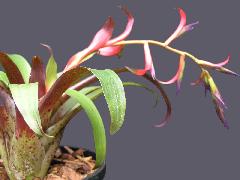
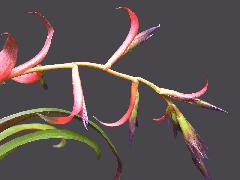
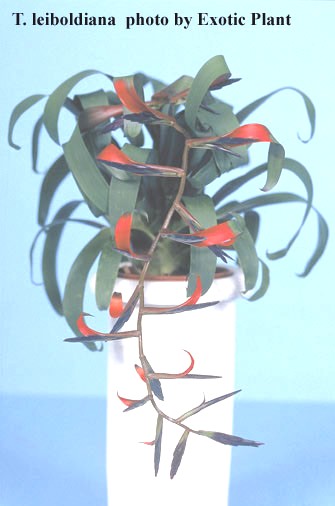


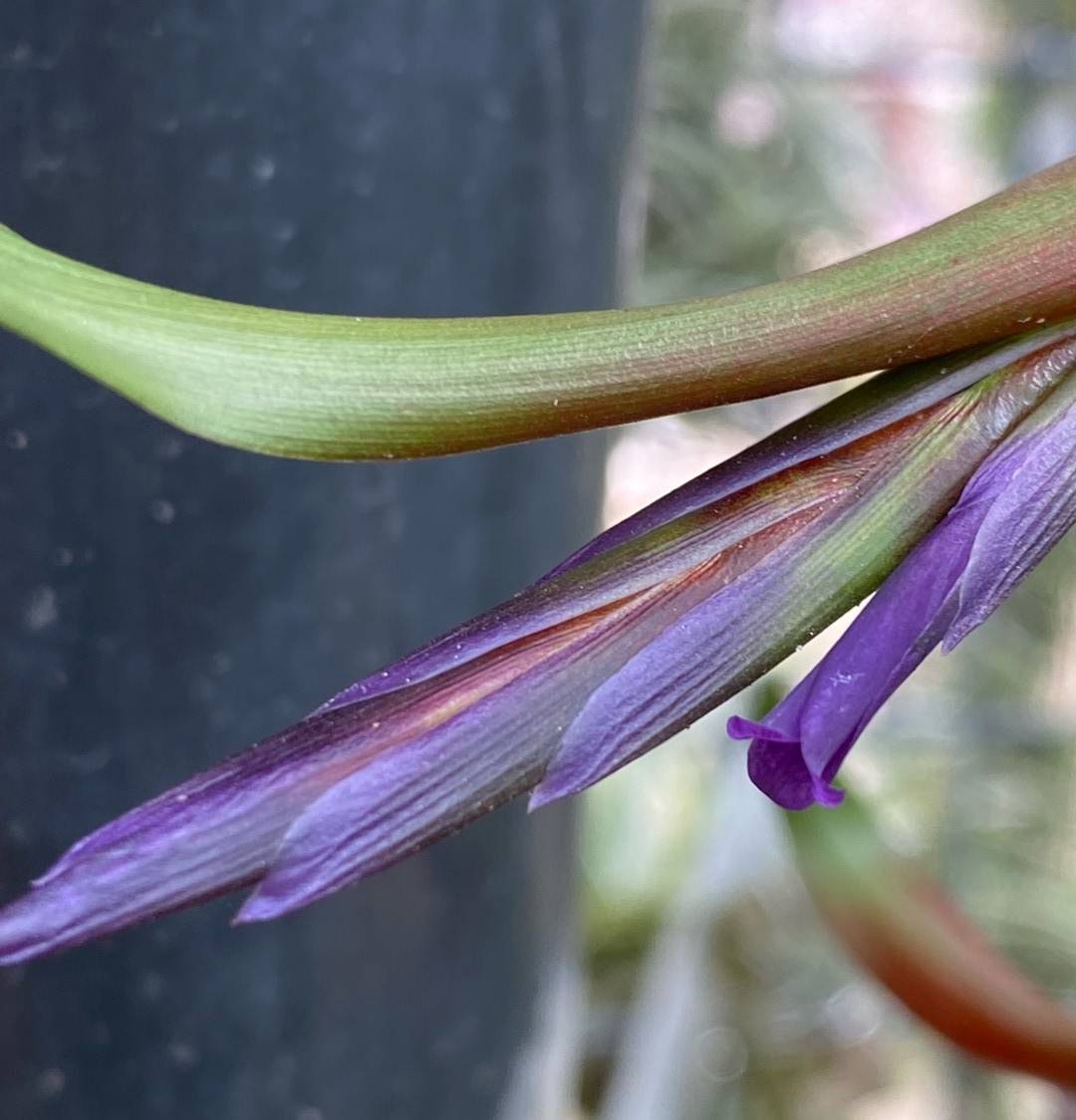
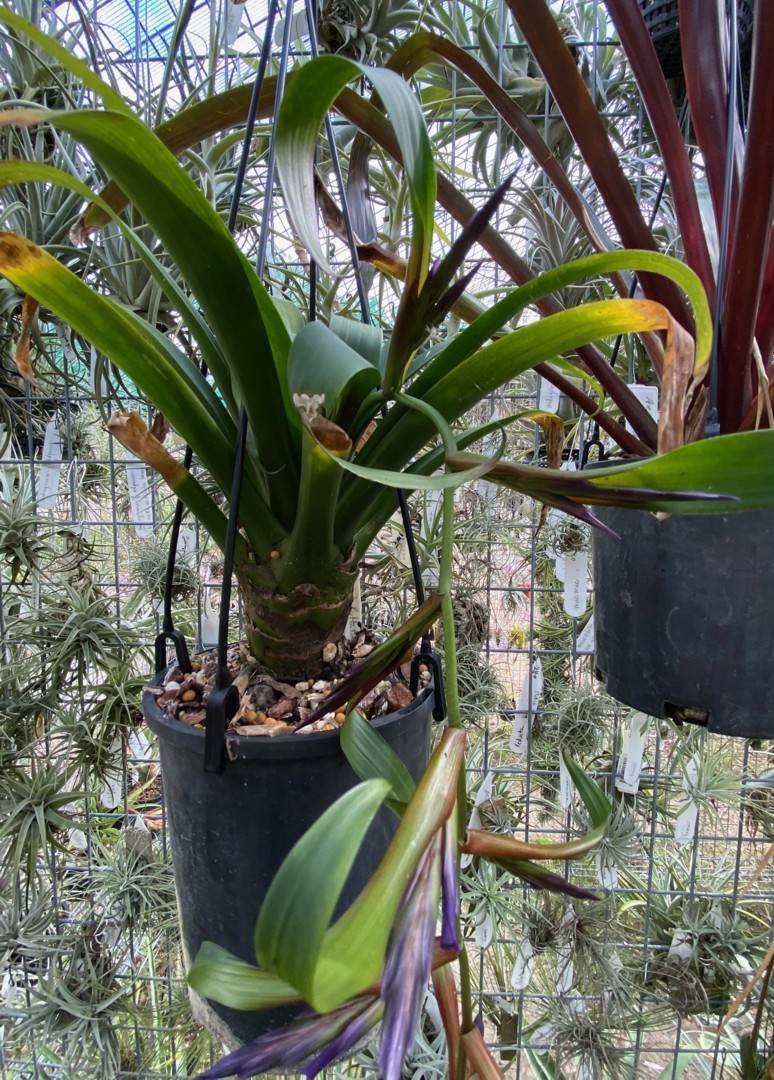


Tillandsia leiboldiana and its variations By Derek Butcher Oct 2017
There is yet another variegated plant that is grown in collections but has no formal name. It would be nice to have named it after the first person who had this mutation but alas. We can only assume that it occurred in the USA but is not on the current lists of the larger US nurseries. There are references in the 1980’s to a pendant inflorescence form but this seems to have gone out of fashion. There are also references to a spotted leaf form that was known as var guttata until Harry Luther considered it unnecessary in DeRebus I 1994, p29. You rarely see this spotted form in cultivation and nobody has considered that it might need a cultivar name.
Variegation could only have occurred fairly recently because it is not on Nat DeLeon’s list in 1985. Searches of catalogues as held in the BCR do not reveal any clues either and yet if you search ‘Google’ anyone would think the quasi-name Tillandsia leiboldiana variegata was very common. To me it is very rare and is another example of selection by horticulturists without recording its existence. If we read about Tillandsia leiboldiana in Smith & Downs we will see that it was a favourite plant with taxonomists in the 1800’s with a number of names given but now treated as synonyms and none refer to variegation. In fact we read “Leaves many in a crateriform rosette, 1-3 dm long; concolourous green or spotted” and “All doubtful cases are referred to this the typical variety subject to later correction. The difference of coloration of the leaf-blade has not shown any significance yet, but it could correspond to habitat as in Vriesea sintenisii (Baker) Smith & Pittendrigh or geography as in Tillandsia spiculosa Grisebach.”
While checking with Ross Little for his views on a problem nobody has written about before, this was his comment: The “spotted” form is not so ‘rare’ in our east coast collections just not as prized as some of its fancier counterparts, un-fortunately we have to say the same for the “pendant” form. The variegated form came to Australia via Peter Tristram ex Chester Skotak around 1990, it has had its ups and downs regards popularity too but all three still sell reasonably well among avid collectors.
Chester Skotak has advised that this plant may have originated in Europe, unfortunately European leads haven’t shed any further light on the problem.
The best solution seems to be to treat these 3 cultivated forms as ‘Leiboldiana Median’ , ‘Leiboldiana Pendant’, and ‘Leiboldiana Spotted’ and register them in the BCR. This way you can check whether you have your own special form of Tillandsia leiboldiana or whether it is being grown by others. These attributes seem to be unique but if you have a quantity of plants with a combination of such, then you may consider them worthy of a new cultivar name. Investigations have not revealed the origins of the variegated plant but if you are aware of any leads please advise.